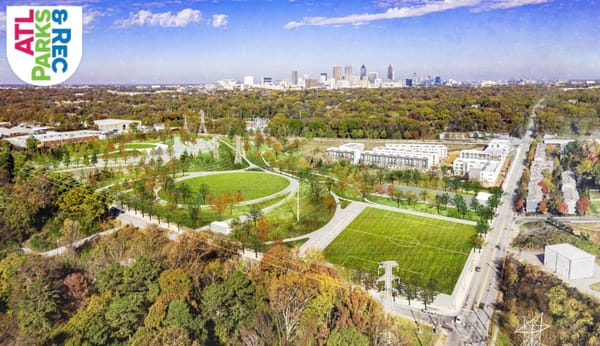Visitation Patterns for Kenosha County's Park System
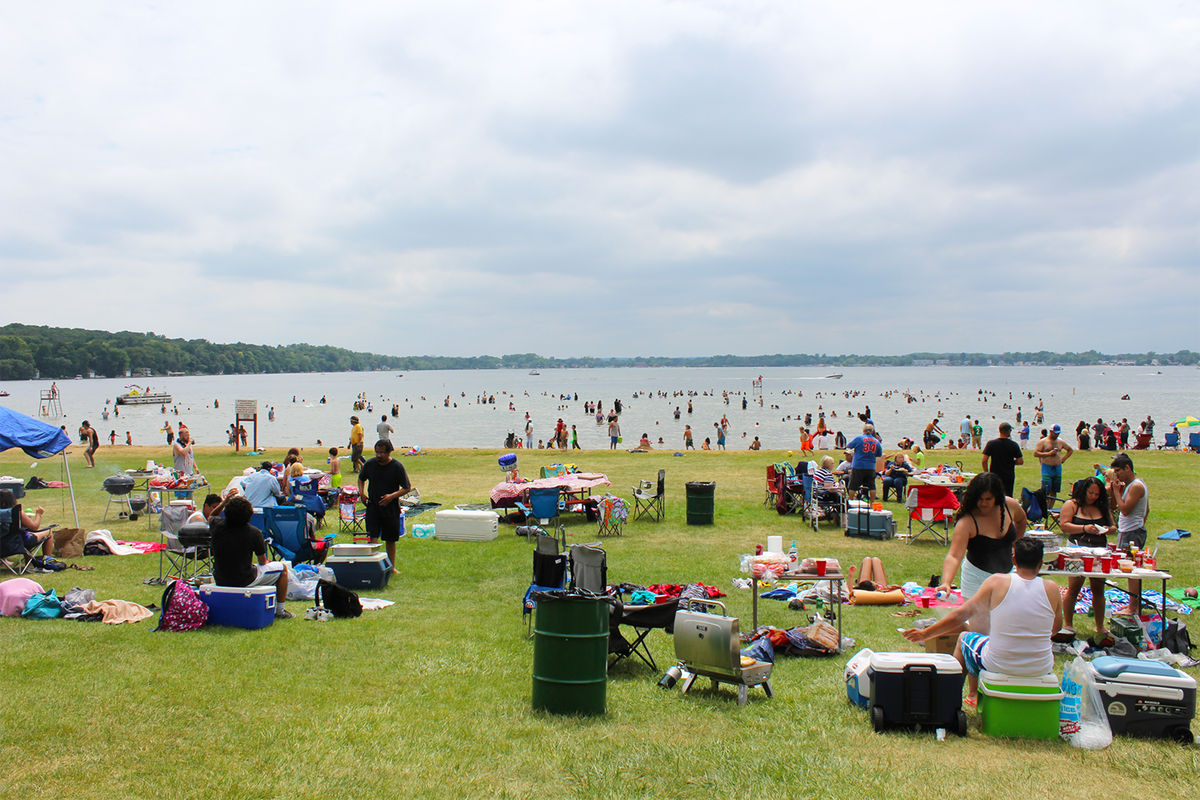
Establishing a Baseline for Park Visits
The estimation of park visitation necessitates a foundational understanding of each park's intrinsic capacity and appeal. The nine park and recreation assets in Kenosha County managed by the county system are not homogenous; they represent a diverse portfolio of recreational infrastructure, natural resources, and cultural venues. Each possesses a unique profile of attributes—including size, location, amenities, and primary function—that collectively determine its baseline potential to attract visitors. This section provides a detailed profile of each park, culminating in a comparative matrix that assigns a Baseline Popularity Index. This index serves as the foundational variable in the multi-factor visitation model detailed in Section 3, establishing a data-driven hierarchy of the parks' inherent drawing power before the application of temporal and event-based variables.
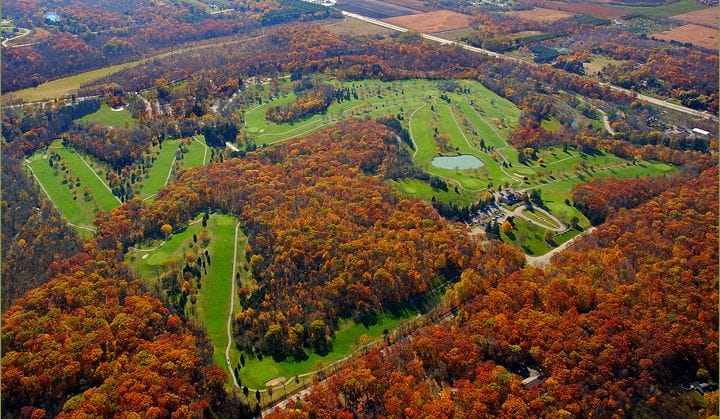
Petrifying Springs Park & Golf Course: The Flagship Destination
Petrifying Springs Park, affectionately known to locals as "Pets," stands as the flagship of the Kenosha County Parks system.1 As the oldest park, established in 1927, it occupies a significant place in the community's recreational life.1 Spanning 350 to 360 acres, it is one of the largest and most developed parks in the county, strategically located near the City of Kenosha and the University of Wisconsin-Parkside.1
The park's immense popularity is rooted in its extensive and diverse array of year-round amenities. It features a lush, 18-hole public golf course that winds through a mature hardwood forest, offering both scenic beauty and a challenging layout.1 A major draw during the warmer months is the seasonal German-style beer garden, which serves as a social hub and event space.3 For active recreation, the park offers numerous hiking and biking trails, sand volleyball courts, softball diamonds, and a lighted sledding hill for winter use.3 It also caters to families and community groups with multiple playgrounds and five large, rentable picnic shelters, several of which are equipped with electricity and fireplaces.1 Two unique features further enhance its appeal: the Carlisle Family Dog Park provides a dedicated space for off-leash activity, and an artesian well, active since the 1930s, offers free, natural spring water to the public, attracting a steady stream of visitors.1
This comprehensive infrastructure supports high-volume, four-season visitation from a wide demographic, including golfers, families, hikers, event-goers, and dog owners. Its status as a premier, multi-use destination makes it the benchmark for visitation potential within the Kenosha County park system.
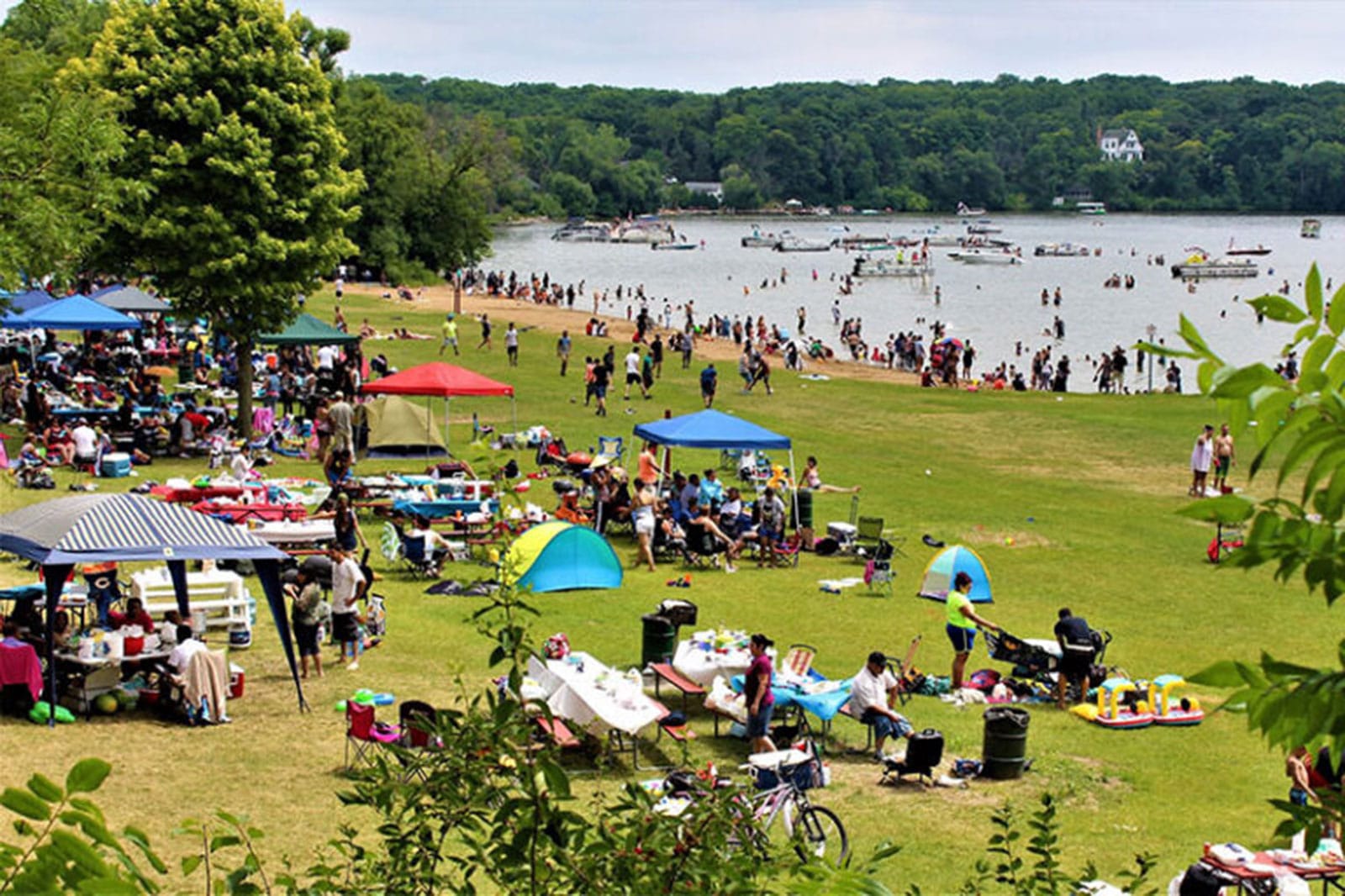
Silver Lake County Park: The Summer Aquatics Hub
Silver Lake County Park is a 260-acre regional destination whose identity is inextricably linked to its extensive water-based recreational offerings.8 The park's centerpiece is a large, sandy beach on the 516-acre Silver Lake, widely regarded as one of the best in southeastern Wisconsin.9 The summer experience is supported by a bathhouse, a lakeside playground, and the Flip Flops concession stand, which operates from Memorial Day to Labor Day, providing food, drinks, and beach essentials.8 The lake itself is a hub for swimming, fishing for species like Musky and Bass, and non-motorized watercraft such as kayaks and paddleboards.8
While its reputation is built on summer activities, Silver Lake Park has cultivated significant secondary attractions that extend its appeal across seasons. It is home to 10 miles of purpose-built single-track and multi-use trails for mountain biking, hiking, and skiing, which are professionally constructed and maintained in partnership with the Kenosha Area Mountain Bike Association (KAMBA).8 The park also features the challenging, 18-hole Silver Fox Disc Golf Course, set within a forest environment.11 In winter, the park remains active with opportunities for cross-country skiing, sledding, and ice fishing.11
The park's visitation pattern is the most seasonally pronounced in the county system, with demand surging dramatically between late May and early September. This demand is highly sensitive to summer weather conditions. During the summer of 2020, in response to the COVID-19 pandemic, a vehicle capacity limit of 162 cars was enforced at the beach parking lot, indicating that on peak days, visitor demand can easily meet or exceed the available infrastructure.12
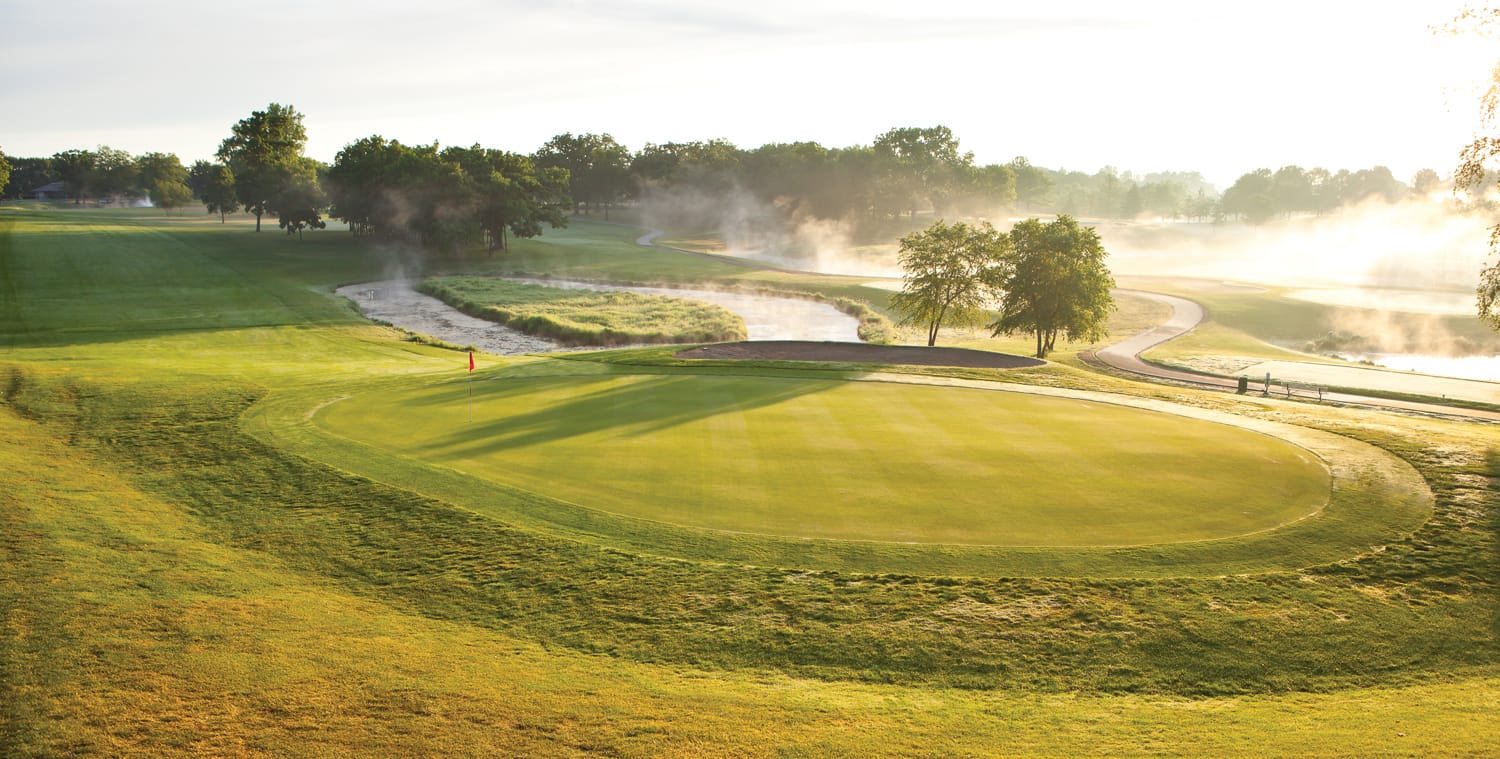
Brighton Dale County Park & Golf Course: The Golfer's Retreat
At 500 acres, Brighton Dale County Park is the largest property in the Kenosha County system, functioning primarily as a specialized destination for golf enthusiasts.13 The park is dominated by Brighton Dale Links, a massive 45-hole championship golf complex that includes two 18-hole courses (White Birch and Blue Spruce) and one 9-hole course (Red Pine), along with a driving range and clubhouse.14 The courses are known for their mature, tree-lined fairways, rolling terrain, and well-manicured conditions, making the park a significant regional draw for the sport.15
While golf is the overwhelming focus, the park also provides ancillary amenities for more casual recreation. These include wooded picnic areas with shelters, a playground, ball diamonds, and a fishing pond.13 Its location is also notable, as it sits adjacent to the 5,000-acre Richard Bong State Recreation Area, placing it within a larger corridor of protected natural and recreational land.14
Visitation to Brighton Dale is almost entirely dictated by the golf season, which typically runs from April through October, weather permitting. While the park grounds are accessible year-round for activities like hiking, the volume of non-golfing visitors is minimal compared to the traffic generated by the golf complex. Its user base is therefore more specific and less family-centric than that of Petrifying Springs or Silver Lake, leading to a distinct and predictable visitation pattern.
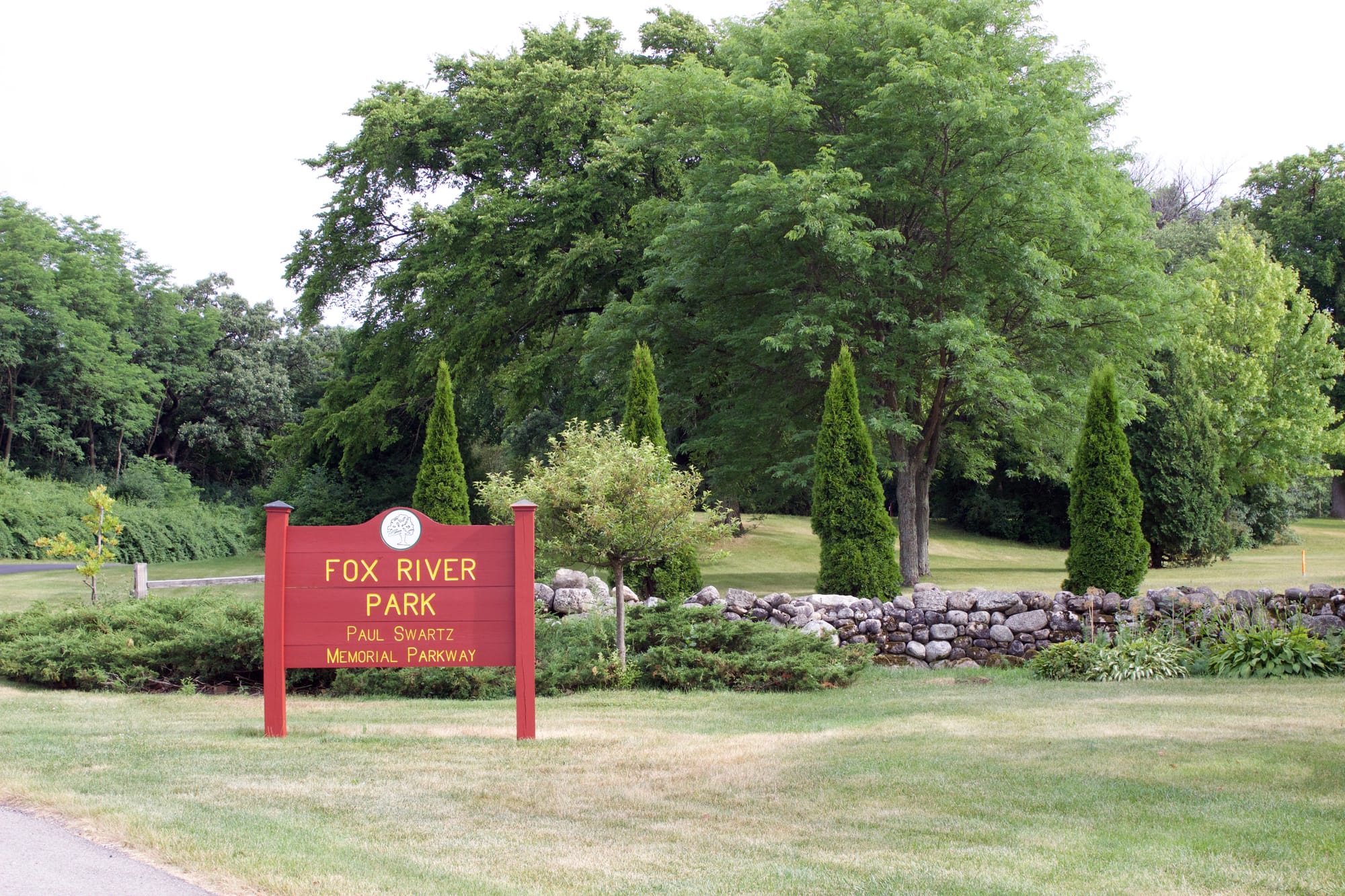
Fox River County Park: The Community Sports and River Access Point
Fox River County Park is a 150-acre facility that serves as a vital hub for community athletics and river-based recreation.16 Located on the banks of the Fox River, the park offers a diverse mix of active amenities. It is home to a popular and challenging 27-hole disc golf course that caters to all skill levels, from beginner to expert.17 The park also features Ray Berres Field, a little league ball diamond, along with tennis courts and sand volleyball courts, making it a frequent site for local league games and tournaments.16
The park's river frontage is a key asset, providing a boat launch that gives canoers and kayakers direct access to the Fox River Water Trail, a designated route for paddlers.17 In the winter months, the park remains a popular destination due to a large, bermed sledding hill equipped with artificial lighting, allowing for safe use after dark.17
Fox River Park's visitation is a blend of scheduled and casual use. The athletic fields and disc golf course generate consistent traffic from organized leagues and dedicated enthusiasts, while the picnic areas, playground, and hiking trails attract families and casual visitors. The lighted sledding hill provides a unique winter draw that helps to sustain visitation during the coldest months.
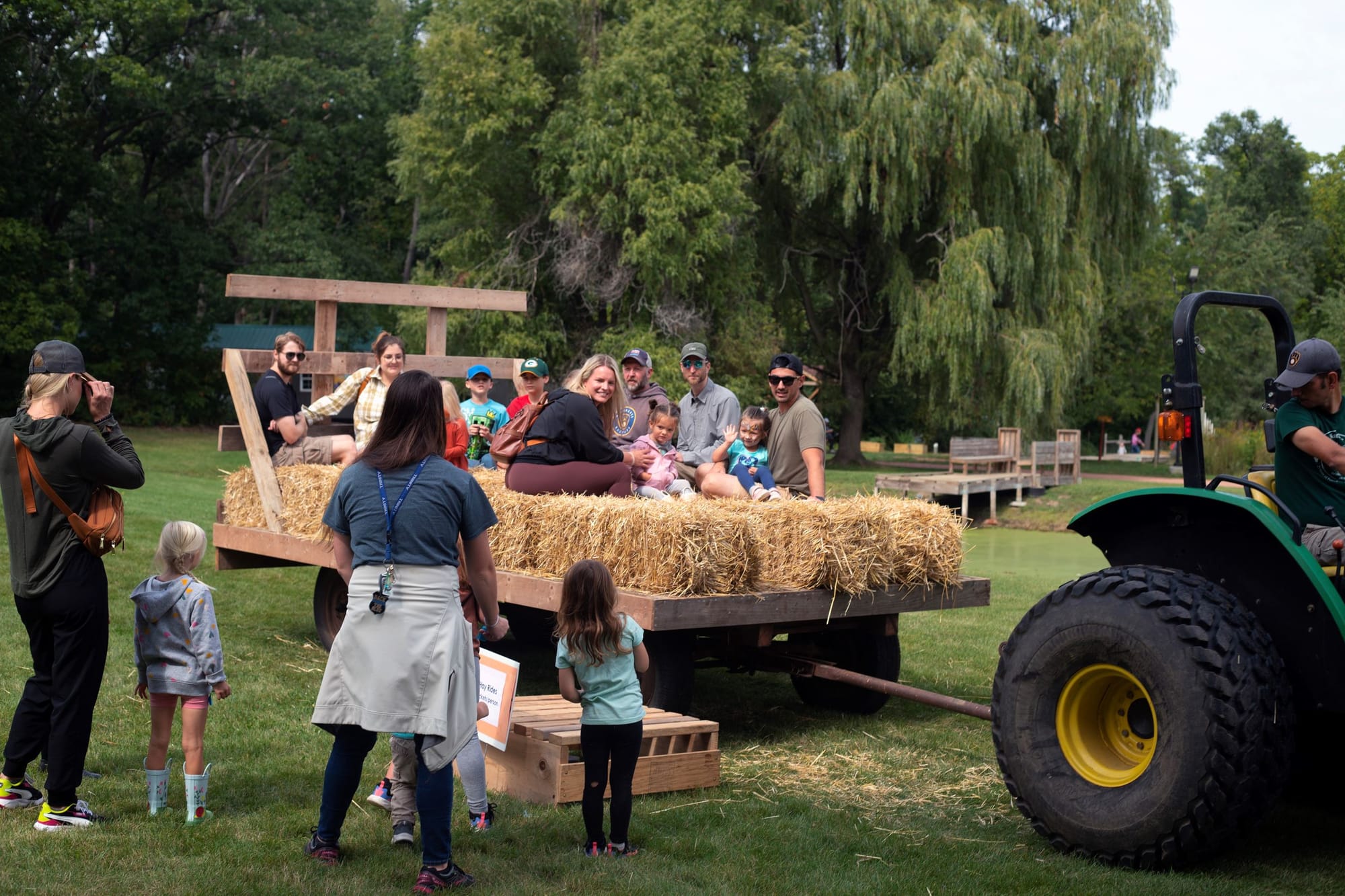
Bristol Woods County Park: The Natural Sanctuary
Described as the "most natural" of all the Kenosha County Parks, Bristol Woods is a 200-acre sanctuary dedicated to passive recreation and environmental education.19 The park's character is defined by its mature oak-hickory woodlands, which are traversed by 4.28 miles of hiking trails.20 These trails wind through a landscape marked by vernal pools and remnants of a glacial past, offering a serene environment for nature observation and birdwatching.19
The educational mission of the park is anchored by the Pringle Nature Center, a regional resource that offers environmental programming and manages snowshoe rentals in the winter.21 In addition to these nature-focused elements, the park includes traditional amenities such as picnic areas, a shelter, and two playgrounds, including a "natural playground" made from materials like logs and boulders to encourage creative play.20 A significant and distinct attraction is the commercial "Boundless Adventures" aerial adventure park, a six-acre facility with rope bridges and ziplines that operates within the park grounds but draws its own separate clientele.20
Bristol Woods attracts a specific user base focused on hiking, environmental education, and quiet immersion in nature. Its visitation is less dependent on sunny weather and more on factors like trail conditions and seasonal beauty, such as the spectacular fall colors in its hardwood forest. The presence of both the nature center and the commercial aerial park creates two distinct streams of visitors to the same location.
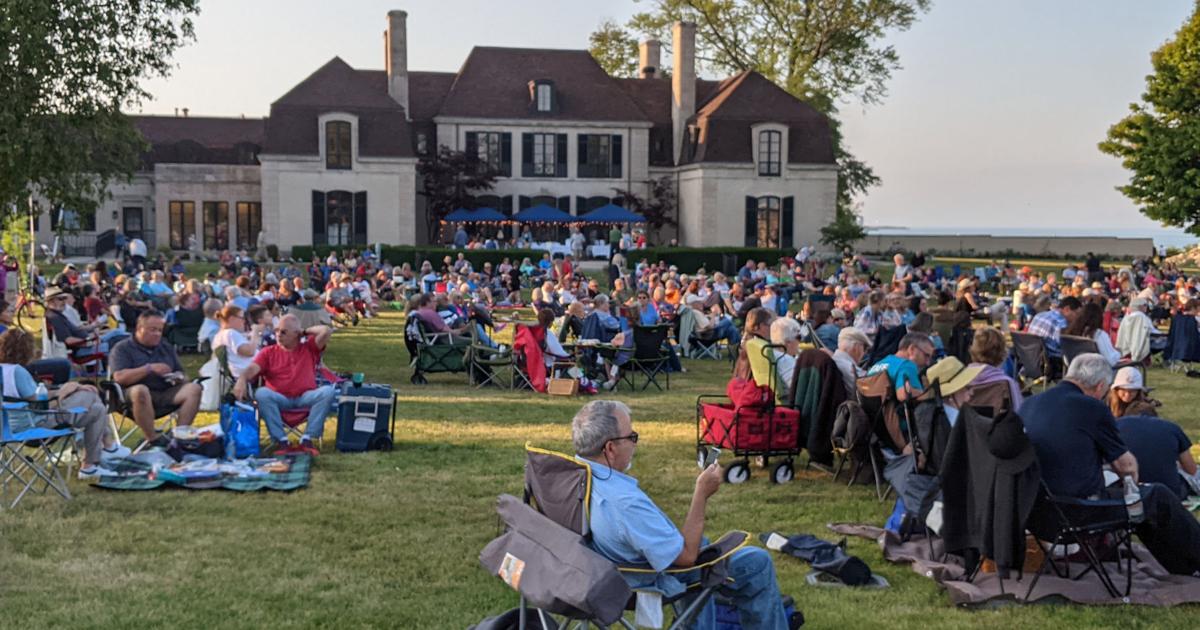
Kemper Center & Anderson Arts Center: The Cultural Historic Lakefront Estate
The Kemper Center and Anderson Arts Center complex operates as a unique 17.5-acre Kenosha County Park situated on the picturesque shore of Lake Michigan.24 Unlike traditional recreational parks, this property functions as a historic and cultural campus. The site is listed on the National Register of Historic Places and includes several key facilities: the Kemper Center, a conference and events venue housed in a former 19th-century girls' school; the Anderson Arts Center, a fine art gallery located in a majestic 1931 French Renaissance Revival mansion; the historic Kemper Chapel; the Civil War-era Durkee Mansion; and the Griffin Observatory.24
The park grounds themselves feature an arboretum, open space with a soccer field, picnic areas, and access to a lakefront walking and biking path.25 However, visitation is overwhelmingly driven by a robust schedule of indoor and outdoor events. These range from private functions like weddings and corporate meetings, with venue capacities from 50 to 500 people, to public events such as the "Music at Twilight" summer concert series, the "Art of the Car" show, the Port of Fear Film Festival, and a popular haunted house in October.24 A major $4.3 million preservation and modernization project at the Anderson Arts Center was completed in 2019, significantly enhancing its facilities and appeal.27
Ambient, casual use of the park grounds is a relatively minor component of its total visitation. The primary drivers are the scheduled events, gallery exhibitions, and mansion tours, which create large, concentrated influxes of visitors throughout the year. The completion of the arts center renovation in 2019 marks a key inflection point, likely boosting the site's baseline popularity for the remainder of the analysis period.
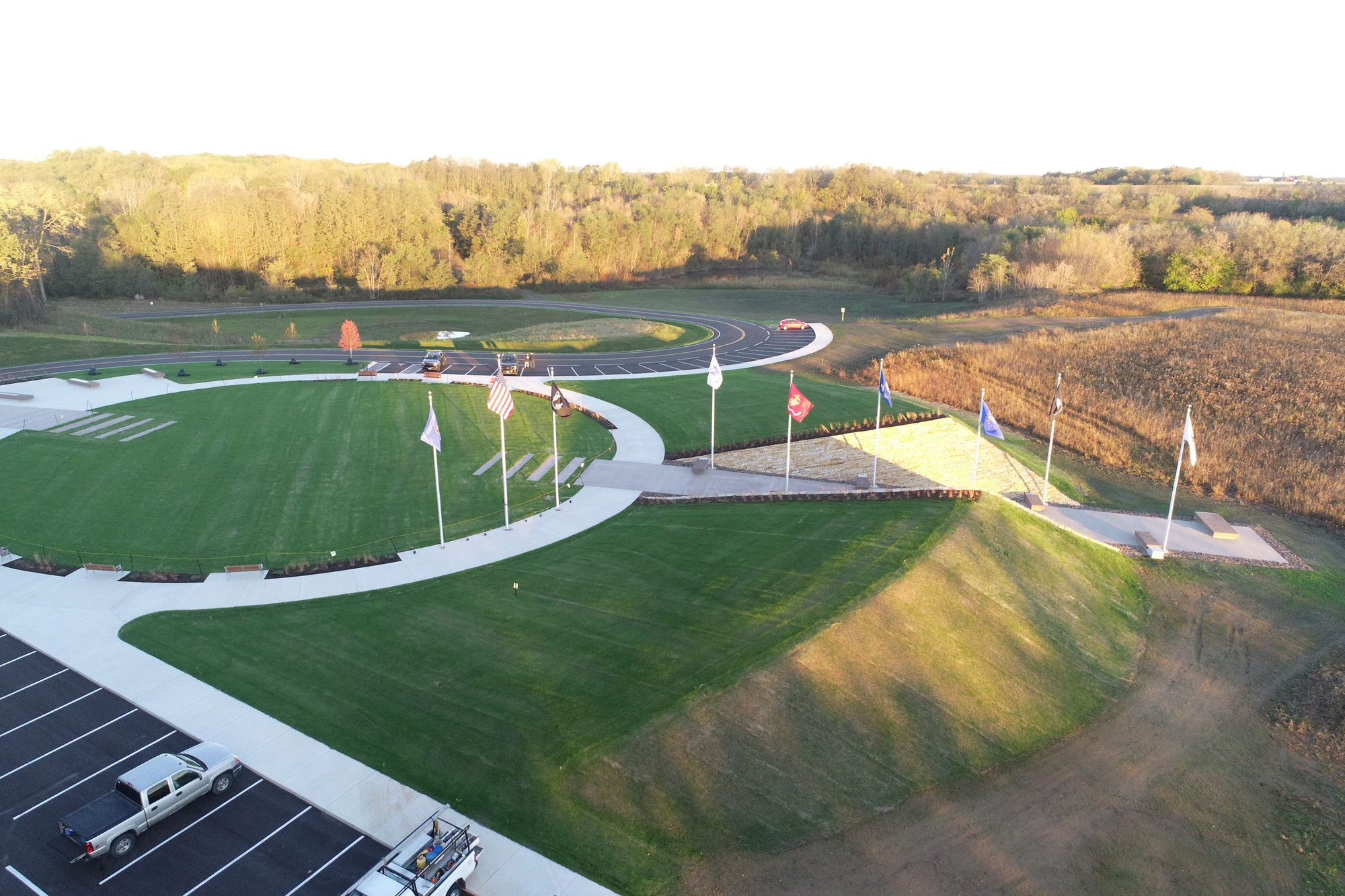
Kenosha County Veterans Memorial Park: The Developing Natural Resource
Kenosha County Veterans Memorial Park is a large, 335-acre property centered around a 39-acre body of water known as Freedom Lake.29 The park, developed on the site of a former gravel quarry, represents an ongoing effort to restore a post-industrial landscape into a hub for natural resource-based recreation.30 Formerly known as KD Park, it was officially renamed and dedicated in 2020 as a tribute to military veterans, an act that raised its public profile.31
The park's focus is on quiet, non-motorized activities. It features over five miles of hiking trails, a dog park, picnic tables, and excellent opportunities for fishing and paddling on the lake.29 Development of the park's infrastructure has been phased over several years. A paved parkway and parking were installed in 2016, followed by a boat launch, pier, and additional parking in 2017, with a restroom facility completed in 2020.31 This timeline of improvements means the park's capacity and appeal have steadily increased throughout the 2019-2025 period. Limited and highly regulated hunting is also permitted in a designated area of the park.31
As an "emerging" park within the county system, its visitation potential has grown as amenities have been completed and public awareness has increased. It appeals to users seeking a tranquil, natural setting for activities like hiking, fishing, and kayaking, similar in spirit to Bristol Woods but with a more prominent water feature.
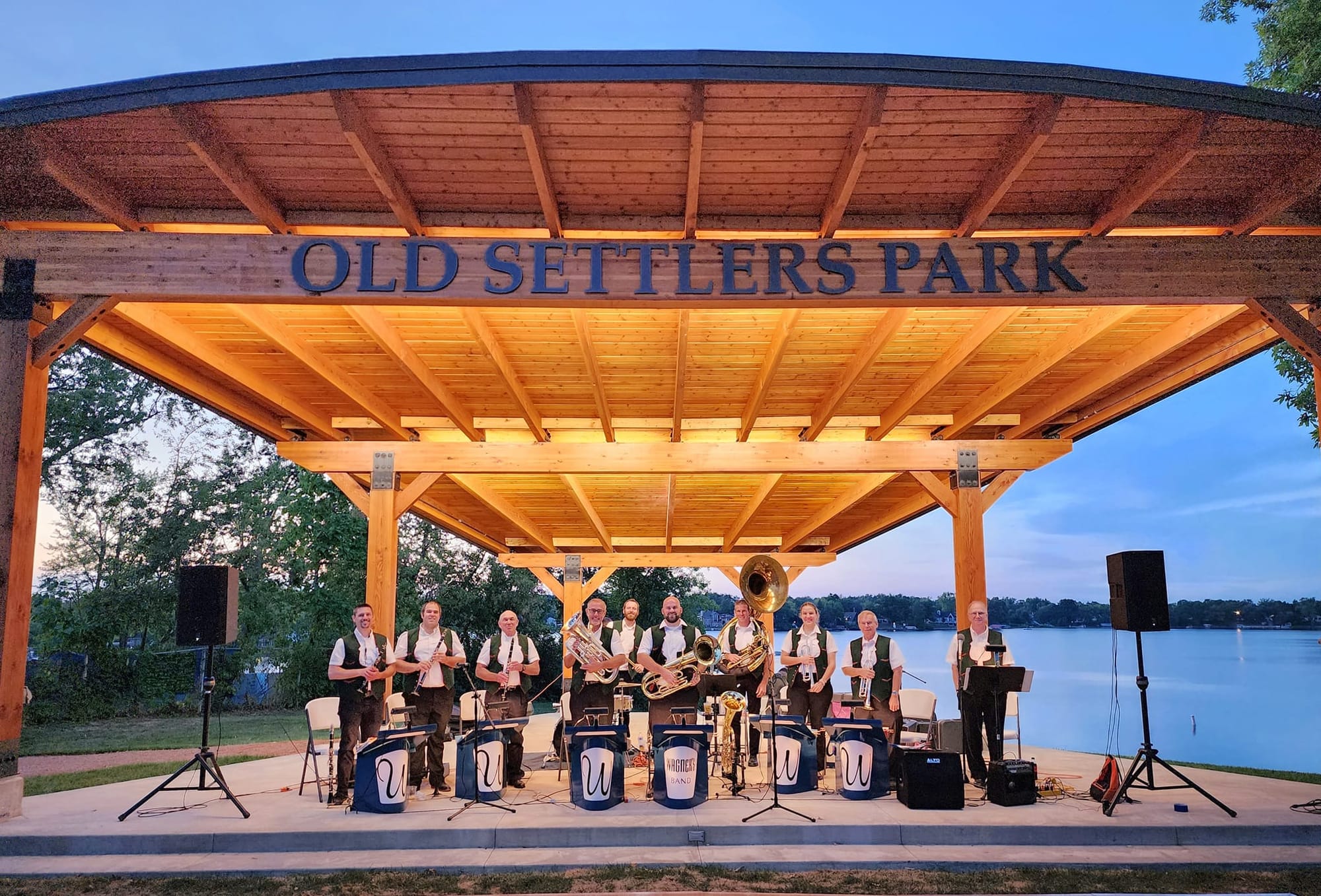
Old Settlers Park: The Neighborhood Beach Park
At just 17 acres, Old Settlers Park is the smallest of the Kenosha County parks, serving as a classic community park for the Paddock Lake area.32 Its primary attraction is a sandy beach on Paddock Lake, which is a popular destination for swimming and sunbathing during the summer months.34 The beach is supported by a bathhouse, restroom facilities, a playground, and shaded picnic areas with grills.32
Despite its small size, the park is packed with amenities that serve the local community. It is home to the Harris Family Dog Park, Spencer Field (a little league ball diamond), and a band shelter that hosts the popular "Rhythm on the Lake" summer concert series.33 In winter, the park provides access for ice fishing on Paddock Lake.34
Old Settlers Park functions as a quintessential neighborhood hub. Its visitation is characterized by a mix of hyper-local daily use from nearby residents and larger, concentrated crowds for specific events like the weekly summer concerts or the annual Oktoberfest celebration.34 Its small footprint and community focus limit its regional draw compared to larger destinations like Silver Lake, but it plays a vital role in the recreational life of its immediate vicinity.
Table 1: Park Profile & Popularity Index Matrix
To systematically quantify the intrinsic visitation potential of each park, the following matrix deconstructs its core attributes.
The Key Amenities Score is a weighted value based on the presence of high-draw features (e.g., golf, beer garden, major event venue = high weight; single playground = low weight).
The Baseline Popularity Index is a normalized score from 1 to 10, derived from size, park type, and amenities, which serves as the foundational input for the visitation estimation model.
Note: Anderson Arts Center is co-located with and functions as part of the Kemper Center campus. For modeling purposes, they are treated as a single entity under the Kemper Center place_id, as their visitation is intrinsically linked.

Dynamic Drivers of Park Visitation (2019-2025): A Timeline of Influence
Park visitation is not static; it is a dynamic interplay between the fixed attributes of a park and a host of external, time-variant factors. To construct an accurate estimation model, it is essential to identify and quantify the impact of these drivers. This section establishes a comprehensive timeline of the primary forces that influence public attendance at Kenosha County parks, including seasonal and weather patterns, the unprecedented disruption of the COVID-19 pandemic, the regular cadence of holidays and school schedules, and the specific draw of programmed park events. Each of these factors will be translated into a series of monthly multipliers that adjust the baseline popularity of each park over the 79-month analysis period.
The Inescapable Influence of Seasonality and Weather
The climate of southeastern Wisconsin is the most fundamental driver of park visitation, creating a predictable annual rhythm of use. Analysis of long-term climate data for Kenosha reveals four distinct seasons that dictate the viability and appeal of outdoor recreation.36
The baseline seasonal curve for park visitation follows this pattern:
- Winter (December - February): The coldest period, with average high temperatures ranging from 30°F to 34°F and significant snowfall (averaging 8-12 inches per month), represents the annual nadir for visitation.37 Activity is limited to hardy users engaging in winter-specific sports like cross-country skiing, snowshoeing, and sledding at parks equipped for them, such as Petrifying Springs, Fox River, and Silver Lake.3
- Spring (March - May): A transitional period of rising temperatures and melting snow. Visitation gradually increases as trails become accessible for hiking and golf courses open, typically in April. This period is often volatile, with late-season snow or extended rain suppressing activity.
- Summer (June - August): The peak season for park use, with average high temperatures in the upper 70s to low 80s.36 This period sees the highest demand for nearly all park amenities, especially beaches, picnic areas, playgrounds, sports fields, and watercraft launches. Parks like Silver Lake and Old Settlers experience their highest attendance during these months.
- Autumn (September - October): A secondary peak, particularly in parks with extensive hardwood forests like Petrifying Springs and Bristol Woods, which attract visitors for fall color viewing.1 Mild temperatures in September and October continue to support activities like hiking, disc golf, and late-season golf. Visitation begins a steep decline in November as temperatures drop.
While this baseline curve provides a general framework, actual monthly weather often deviates from the historical average. The model accounts for these deviations by analyzing historical weather data for each month from 2019 through mid-2024. For instance, the severe polar vortex in late January 2019, which brought extreme cold to the region, would have drastically suppressed visitation below typical January levels.38 Conversely, an unseasonably warm and dry March would receive a positive multiplier. For the forecast period from August 2024 to July 2025, the model reverts to using the long-term historical averages, as specific long-range weather forecasting is not reliable for this purpose.
The COVID-19 Pandemic: A Paradigm Shift in Outdoor Recreation (2020-2022)
The COVID-19 pandemic was a "black swan" event that fundamentally and dramatically altered public use of outdoor spaces. Its impact was not a simple, uniform downturn but a complex, multi-phase phenomenon that reshaped recreational habits.
- Phase 1: Lockdown and Suppression (March - May 2020): On March 24, 2020, the State of Wisconsin issued Emergency Order #12, the "Safer at Home" order, which closed non-essential businesses and prohibited public gatherings.39 While parks themselves were generally considered essential for health and wellness, amenities such as playgrounds, shelters, and restrooms were often closed, and organized activities were cancelled. This initial period of uncertainty and restriction created a sharp, temporary depression in park visitation. The model applies a strong negative multiplier during these months.
- Phase 2: The Outdoor Recreation Boom (Summer 2020 - Summer 2021): As the "Safer at Home" order was lifted in May 2020 and it became clear that outdoor activities posed a lower risk of virus transmission, a massive societal shift occurred. With indoor entertainment venues like movie theaters, restaurants, and gyms either closed or operating under heavy restrictions, public parks became one of the few safe and accessible outlets for recreation, exercise, and social connection. This shift triggered an unprecedented surge in park visitation that lasted for more than a year. Parks with ample open space and extensive trail networks, such as Petrifying Springs, Bristol Woods, and Veterans Memorial Park, saw dramatic increases in use. Demand at popular destinations like Silver Lake Park became so intense that capacity limits had to be enforced; the beach parking lot was restricted to 162 vehicles to ensure social distancing, a clear indicator that demand was outstripping supply.12 For this extended period, the model applies a significant positive multiplier, reflecting the unique role parks played during the height of the pandemic.
- Phase 3: Normalization and Lasting Effects (Late 2021 - 2022): With the widespread rollout of vaccines beginning in early 2021 and the gradual reopening of all sectors of society, the extreme demand for park-based recreation began to moderate.40 However, the pandemic appears to have had a lasting effect. Many individuals and families who discovered or rediscovered their local parks during the pandemic likely incorporated them into their regular routines. This created a "new normal" for park attendance, settling at a level higher than the pre-pandemic baseline. The model reflects this by tapering the strong positive multiplier down to a sustained, moderate positive multiplier that persists through 2022 and beyond.
The Cadence of Community Life: Holidays and School Breaks
The regular rhythm of the academic calendar and public holidays creates predictable peaks and troughs in park visitation, particularly for family-oriented parks.
- Federal and Major Holidays: Federal holidays that create three-day weekends during prime recreational seasons are powerful drivers of visitation. Memorial Day and Labor Day, which bookend the peak summer season, will receive the highest positive multipliers. The Fourth of July, falling in the middle of summer, also generates a massive surge in attendance, often associated with picnics, beach use, and community fireworks (though specific firework displays within the parks must be verified). Other holidays like Martin Luther King Jr. Day, Thanksgiving, and the Christmas-New Year's period have a more complex effect; while they provide leisure time, they occur during the cold season, which tempers the potential for outdoor activity.
- Kenosha Unified School District (KUSD) Calendar: The academic calendar for KUSD is a critical input, as it dictates when the largest single demographic of potential park users—school-aged children and their families—is available for weekday recreation. Based on a composite of available KUSD calendars from 2019 to 2025, the key periods are 41:
- Summer Break: The most significant period, typically running from the second week of June through the end of August. During these months, weekday visitation at parks with playgrounds, beaches, and athletic fields increases dramatically.
- Winter Break: A two-week period spanning late December and early January. This break can boost attendance at parks with winter amenities like sledding hills and ski trails, weather permitting.
- Spring Break: A one-week period, typically in late March. Its impact is highly dependent on the weather; a mild and sunny spring break can kickstart the spring recreation season, while a cold and wet one will have a negligible effect.
Park-Specific Event Schedules: Driving Concentrated Visitation
A significant portion of visitation to Kenosha County parks is not ambient or casual but is actively programmed. The county and its partners host a rich calendar of recurring events, particularly during the summer, which draw large, concentrated crowds to specific parks on specific days. These event-driven visitors must be calculated separately and added to the ambient visitation estimate.
- Recurring Summer Concert Series: Several parks host weekly free concerts that are staples of the community's summer life.45
- Rhythm on the Lake (Old Settlers Park): This series brings hundreds of visitors to the small park every Thursday evening from June to August.34
- Bristol Woodstock (Bristol Woods Park): A similar series held on Wednesdays, activating the normally quiet nature preserve with live music.21
- Music at Twilight (Anderson Arts Center): A bi-weekly Tuesday concert on the scenic lawn of the arts center, drawing a large audience to the Kemper campus.27
- Major Annual Festivals:
- Picnic in the Park (Petrifying Springs Park): Billed as the Kenosha County Parks' "biggest event of the year," this single-day festival in August features multiple bands, food trucks, family activities, and a fireworks finale, drawing thousands of attendees.47
- Old Settlers Oktoberfest (Old Settlers Park): A themed, single-day festival in September that brings a significant crowd to the park outside of the peak summer season.34
- Recurring Activity-Based Events:
- Yoga and Movie Nights (Petrifying Springs Park): Weekly yoga sessions on Mondays and family movie nights on Fridays throughout the summer create consistent, smaller-scale draws to the park.3
- Fall Wheel Ride: An annual community bike ride in September that starts at the Kemper Center and often involves Petrifying Springs Park, promoting trail use.24
For each of these events, an estimated attendance figure is generated based on the event's scale, historical descriptions, and venue capacity. This figure is then added directly to the calculated ambient visitation for the corresponding park and month to produce the final total visitation estimate.

Visitation Projections and Data Analysis
The culmination of the preceding analysis is the generation of a comprehensive, month-by-month dataset of estimated park visitation. This is achieved through a systematic, multi-factor model that translates the qualitative and quantitative attributes of the parks and the dynamic external drivers into numerical estimates. This section details the methodology of that model and presents its primary output: the complete visitation data table for all nine Kenosha County parks from January 2019 through July 2025.
The Visitation Estimation Model: A Multi-Factor Approach
The estimation model is designed to be transparent and logically defensible, grounding its outputs in the evidence gathered in the previous sections. It operates in two stages: first, calculating a baseline "ambient" visitation level for each park and month, and second, adding the estimated attendance from specific, large-scale events.
The core of the model is the formula for calculating ambient visitation. This figure represents the number of casual, non-event-driven visitors a park is likely to receive in a given month. It is calculated as follows:
Ambient Visitation=(Base Visitors)×(Seasonal Multiplier)×(Weather Deviation Multiplier)×(Holiday/Break Multiplier)×(COVID-19 Multiplier)
The components of this formula are defined as follows:
- Mobility GPS Data: This is a comprehensive analysis based on crowdsourced GPS data points collected from mobile phones with full disclosure, consent, and opt-in from consumers, making the data compliant with local and regional privacy policies. The mobility data is filtered by parks and trails shapes, clustered and analyzed using machine learning algorithms to infer visitation counts, dwell time, repeating patterns, and movement trends for visitors across the entire county.
- Base Visitors: This is a scalar value derived directly from the Baseline Popularity Index established in Table 1. It represents the park's intrinsic drawing power. A park with an index of 10.0 (Petrifying Springs) will have a much higher base visitor value than a park with an index of 4.0 (Old Settlers).
- Seasonal Multiplier: A value between 0 and 1 that reflects the baseline seasonal curve. June and July have the highest multipliers, while January and February have the lowest.
- Weather Deviation Multiplier: This adjusts the seasonal multiplier based on actual historical weather for a given month. A month that was significantly warmer and sunnier than average would receive a multiplier greater than 1.0, while a colder, wetter month would receive a multiplier less than 1.0.
- Holiday/Break Multiplier: This factor increases the visitation estimate during months with major holidays (especially three-day weekends like Memorial Day) and school vacation periods (Summer, Winter, and Spring breaks).
- COVID-19 Multiplier: This is a crucial variable that captures the unique impact of the pandemic. It applies a strong negative value for March-May 2020, a significant positive value from June 2020 through mid-2021, and a moderate, tapering positive value from late 2021 onward to reflect the "new normal."
Once the ambient visitation is calculated for a given park and month, the second stage is to integrate the impact of major, programmed events. The attendance for these events is estimated separately and added to the ambient figure.
Total Monthly Visitation=Ambient Visitation+∑(Event Attendance)
For example, the estimated attendance for the annual "Picnic in the Park" festival is added to the calculated ambient visitation for Petrifying Springs Park in August of each year the event was held. Similarly, the cumulative attendance for the four or five weekly "Rhythm on the Lake" concerts is added to the ambient total for Old Settlers Park for the months of June, July, and August. This two-stage process ensures that the model captures both the regular, passive use of the parks and the large, concentrated spikes in attendance driven by specific programming.

Comprehensive Visitation Data Table (2019-2025)
The big table in your CityData dashboard presents the final results of the visitation estimation model. Each row represents one of the nine unique park assets, identified by its place_id and place_name. Each column corresponds to a specific month and year, from January 2019 to July 2025. The numerical value in each cell is the estimated total monthly visitation for that park in that month, inclusive of both ambient visitors and event attendees. Reach out if you'd like to review the comprehensive visitation data table.
Strategic Insights and Concluding Remarks
The data generated by the visitation model, while an estimation, provides a robust framework for strategic analysis of the Kenosha County park system. The patterns revealed in the data offer a clear narrative of how these public assets are utilized throughout the year and how they respond to both predictable cycles and major external shocks. This final section synthesizes the key findings from the data, offering strategic interpretations and forward-looking conclusions for park management and planning.
Park Resilience
The visitation data clearly illustrates the tiered and specialized nature of the Kenosha County park system. A clear distinction emerges between parks with stable, year-round appeal and those characterized by extreme seasonal volatility. Petrifying Springs Park, with its diverse portfolio of amenities including golf, a beer garden, extensive trails, and a lighted sledding hill, demonstrates the most resilient visitation profile. Its numbers, while peaking in summer, remain substantial even during shoulder seasons and winter, reflecting its ability to cater to a wide range of activities and users throughout the year.
In stark contrast, parks like Silver Lake and Old Settlers exhibit extreme seasonal dependency. Their visitation is overwhelmingly concentrated between June and August, driven almost entirely by their beaches and summer amenities. This volatility has significant implications for resource allocation, requiring intensive staffing and maintenance during a compressed peak season, followed by long periods of relative dormancy.
Furthermore, the data quantifies the critical role of active programming in driving attendance. For smaller parks like Old Settlers, the "Rhythm on the Lake" concert series is not just an amenity but a primary driver of its summer visitation, likely accounting for a substantial percentage of its total for June, July, and August. Similarly, the Kemper Center's visitation is almost entirely a function of its event calendar. This reliance on programming makes these parks vulnerable to budget cuts or shifts in programming strategy, but it also highlights a powerful tool for shaping and increasing public engagement. The success of major single-day events like "Picnic in the Park" at Petrifying Springs demonstrates the potential to create massive visitation spikes and community focal points through strategic, large-scale event planning.
The COVID-19 pandemic was the most significant disruptive event in the analysis period, and its effects extend beyond the initial lockdown and subsequent surge. The data model reflects a lasting "echo" from the pandemic—a sustained elevation in ambient park use compared to the 2019 baseline. This represents a fundamental expansion of the user base. The period of restricted indoor activities effectively served as a large-scale marketing and engagement campaign for the county's outdoor resources, introducing many residents to their local parks for the first time or re-engaging them in new ways. The forecast for 2024-2025 is built on the assumption that this behavioral shift has partially persisted, resulting in a higher "new normal" for ambient visitation.
Looking forward, the model suggests certain parks are poised for significant growth. Kenosha County Veterans Memorial Park stands out in this regard. As a relatively new park with a phased development timeline, its visitation potential has been steadily increasing as new amenities like the boat launch and restroom facilities have come online.31 As public awareness of the park and its unique, tranquil offerings grows, it is projected to capture an increasing share of the county's recreational activity, particularly among users seeking passive, nature-based experiences.

Concluding Summary
This report has presented a comprehensive, data-driven estimation of monthly visitation for nine key park assets in Kenosha County from January 2019 to July 2025. In the absence of official visitor counts, a multi-factor model was developed to provide a transparent and methodologically sound alternative. This model integrates the intrinsic characteristics of each park—its size, amenities, and core function—with a detailed timeline of dynamic external drivers, including seasonality, specific weather events, the COVID-19 pandemic, public holidays, school schedules, and a robust calendar of programmed events.
The resulting dataset reveals a complex and dynamic park system. It highlights the central role of flagship destinations like Petrifying Springs Park, the intense seasonal demand for aquatic hubs like Silver Lake, and the growing importance of strategic event programming as a key driver of public engagement. The analysis also captures the profound and lasting impact of the COVID-19 pandemic, which initially suppressed but ultimately expanded the user base for outdoor recreation in the county. While the figures presented are modeled estimates backed by mobility GPS data measurements, they are grounded in a rigorous synthesis of available evidence and provide a powerful analytical tool. This dataset and the accompanying analysis offer a detailed framework to support strategic planning, resource allocation, and a deeper understanding of how the public interacts with the invaluable recreational and cultural assets of Kenosha County.


